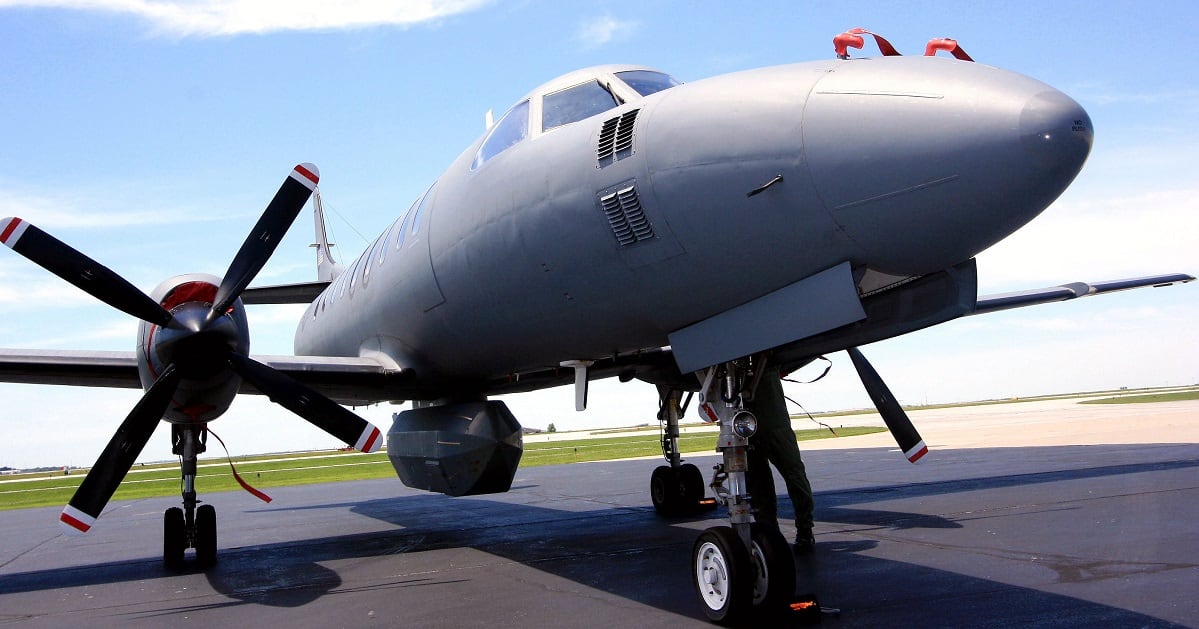The Air National Guard is saying goodbye to its fleet of 11 niche reconnaissance planes after years of sparring with Congress over their future.
RC-26 Condors are small propeller planes that can find and map targets from drug-runners to forest fires using infrared and electro-optical imaging. The planes entered the Air Force in 1989 and are spread across units in Alabama, Arizona, California, Iowa, Mississippi, New Mexico, Texas, West Virginia, Wisconsin and Washington state.
Condors offer an aerial surveillance option for local and federal law enforcement agencies, allowing them to cut down on high-speed chases and more easily gather evidence on drug trafficking organizations, the Air Force said in a release Tuesday.
RELATED

“Officers, civilians, suspects, families and regular citizens … have no idea that the reason that they are alive is because those guys were experts at their jobs, helped chase down and arrest drug dealers, in ways that could not have been done in any other platform,” said Lt. Col. Benjamin West, RC-26 program manager at the Wisconsin Air National Guard.
The aircraft can also relay video of natural disasters to civilian and military agencies on the ground.
“We can downlink that video to people on the ground so they can see from the air what’s been damaged, who needs rescuing, and they can coordinate from there,” Adam Kinzinger, the former Illinois Republican congressman who flies the RC-26 as a lieutenant colonel in the Wisconsin Guard, said in an Air Force release.
Those capabilities recently made RC-26s a target of federal scrutiny.
Condors were seen flying over the District of Columbia, Minneapolis and Phoenix amid civil unrest across the country in 2020, spurring allegations that the Guard was inappropriately using the aircraft to spy on Americans protesting police brutality. A Los Angeles Times investigation that year noted that one RC-26 had patrolled peaceful protests near the California National Guard boss’s home outside Sacramento.
An Air Force inspector general inquiry concluded in August 2020 that the planes were keeping an eye on crowd and fire safety, not tracking individuals.
The Air Force argues that maintaining the three-decade-old planes costs $30 million each year, even as other aircraft have surpassed the Condor’s capabilities. The 2020 and 2021 National Defense Authorization acts blocked the service from retiring the fleet.
Kinzinger, a six-term lawmaker who declined to seek reelection and left Congress on Tuesday, was a staunch advocate for the RC-26 in annual defense policy and spending bills.
The RC-26 is “the only aircraft in the Air Force inventory that can do Pillar I of the president’s National Security Strategy, which includes counter-drug and border security for both state and federal missions,” Kinzinger said in a 2019 op-ed in Air Force Times.
“Despite the important abilities of this reconnaissance plane, Air Guard officials announced they’ll be removing it from use, and will do so quickly,” he wrote. “I implore the Air Guard to recognize the merits of this aircraft and its value to our national security.”
Lawmakers granted the Air Force’s wish in the 2023 NDAA, which became law without restrictions on the fate of the Condor fleet.
Kinzinger’s Wisconsin Guard unit flew its last RC-26 mission on Dec. 28.
Rachel Cohen is the editor of Air Force Times. She joined the publication as its senior reporter in March 2021. Her work has appeared in the Washington Post, the Frederick News-Post (Md.), Air and Space Forces Magazine, Inside Defense, Inside Health Policy and elsewhere.





